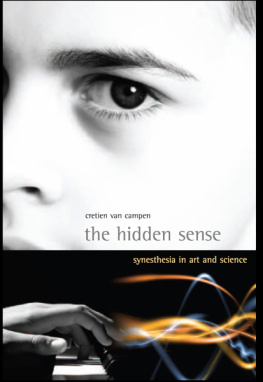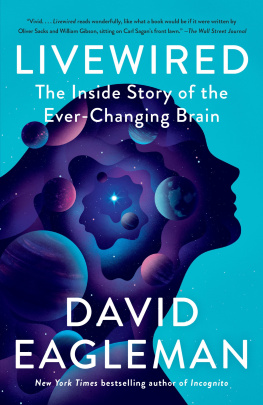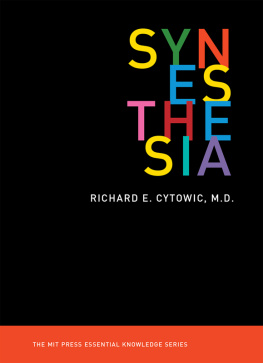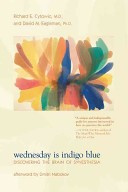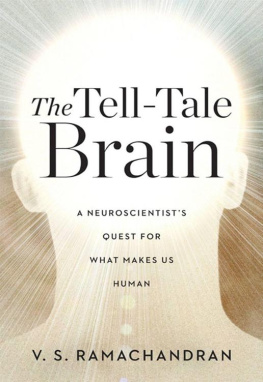
The Hidden Sense
LEONARDO
Roger F. Malina, Executive Editor
Sean Cubitt, Editor-in-Chief
The Visual Mind, edited by Michele Emmer, 1993
Leonardo Almanac, edited by Craig Harris, 1994
Designing Information Technology, Richard Coyne, 1995
Immersed in Technology: Art and Virtual Environments, edited by Mary Anne Moser with Douglas MacLeod, 1996
Technoromanticism: Digital Narrative, Holism, and the Romance of the Real, Richard Coyne, 1999
Art and Innovation: The Xerox PARC Artist-in-Residence Program, edited by Craig Harris, 1999
The Digital Dialectic: New Essays on New Media, edited by Peter Lunenfeld, 1999
The Robot in the Garden: Telerobotics and Telepistemology in the Age of the Internet, edited by Ken Goldberg, 2000
The Language of New Media, Lev Manovich, 2001
Metal and Flesh: The Evolution of Man: Technology Takes Over, Ollivier Dyens, 2001
Uncanny Networks: Dialogues with the Virtual Intelligentsia, Geert Lovink, 2002
Information Arts: Intersections of Art, Science, and Technology, Stephen Wilson, 2002
Virtual Art: From Illusion to Immersion, Oliver Grau, 2003
Women, Art, and Technology, edited by Judy Malloy, 2003
Protocol: How Control Exists after Decentralization, Alexander R. Galloway, 2004
At a Distance: Precursors to Art and Activism on the Internet, edited by Annmarie Chandler and Norie Neumark, 2005
The Visual Mind II, edited by Michele Emmer, 2005
CODE: Collaborative Ownership and the Digital Economy, edited by Rishab Aiyer Ghosh, 2005
The Global Genome: Biotechnology, Politics, and Culture, Eugene Thacker, 2005
Media Ecologies: Materialist Energies in Art and Technoculture, Matthew Fuller, 2005 Art Beyond Biology, edited by Eduardo Kac, 2006
New Media Poetics: Contexts, Technotexts, and Theories, edited by Adalaide Morris and Thomas Swiss, 2006
Aesthetic Computing, edited by Paul A. Fishwick, 2006
Digital Performance: A History of New Media in Theater, Dance, Performance Art, and Installation, Steve Dixon, 2006
MediaArtHistories, edited by Oliver Grau, 2006
From Technological to Virtual Art, Frank Popper, 2007
META/DATA: A Digital Poetics, Mark Amerika, 2007
The Hidden Sense: Synesthesia in Art and Science, Cretien van Campen, 2007
2008 Massachusetts Institute of Technology
All rights reserved. No part of this book may be reproduced in any form by any electronic or mechanical means (including photocopying, recording, or information storage and retrieval) without permission in writing from the publisher
Library of Congress Cataloging-in-Publication Data
Campen, Cretien van.
The hidden sense : synesthesia in art ad science / Cretien van Campen.
p. cm.(Leonardo)
Includes bibliographical references and index.
ISBN 978-0-262-22081-1 (hardcover : alk. paper) 1. Synesthesia. I. Title.
BF495.C36 2007
152.189dc22
2007000983
10 9 8 7 6 5 4 3 2 1
Contents
Series Foreword
Acknowledgments
1 Introduction
I Perception
2 Music Video Clip without TV
3 Children Draw Music
4 Visual Music
II Thought
5 Calculating in Colors
6 Poetic Synesthesia
7 Exploring Drug-Induced Synesthesia
III Insight
8 A Colored Brain?
9 Dark Double Bass and Purple Piano
10 The Hidden Sense
Bibliography
Name Index
Subject Index
Series Foreword
The arts, science, and technology are experiencing a period of profound change. Explosive challenges to the institutions and practices of engineering, art making, and scientific research raise urgent questions of ethics, craft, and care for the planet and its inhabitants. Unforeseen forms of beauty and understanding are possible, but so too are unexpected risks and threats. A newly global connectivity creates new arenas for interaction between science, art, and technology, but also creates the preconditions for global crises. The Leonardo Book series, published by the MIT Press, aims to consider these opportunities, changes, and challenges in books that are both timely and of enduring value
Leonardo books provide a public forum for research and debate; they contribute to the archive of art-science-technology interactions; they contribute to understandings of emergent historical processes; and they point toward future practices in creativity, research, scholarship, and enterprise
To find more information about Leonardo/ISAST and to order our publications, go to Leonardo Online at <>.
Sean Cubitt
Editor-in-Chief, Leonardo Book series
Leonardo Book Series Advisory Committee: Sean Cubitt, Chair; Michael Punt; Eugene Thacker; Anna Munster; Laura Marks; Sundar Sarrukai; Annick Bureaud
Doug Sery, Acquiring Editor
Joel Slayton, Editorial Consultant
Leonardo/International Society for the Arts, Sciences, and Technology (ISAST)
Leonardo, the International Society for the Arts, Sciences, and Technology, and the affiliated French organization, Association Leonardo, have two very simple goals:
1. To document and make known the work of artists, researchers, and scholars interested in the ways that the contemporary arts interact with science and technology
2. To create a forum and meeting places where artists, scientists, and engineers can meet, exchange ideas, and, where appropriate, collaborate
When the journal Leonardo was started some forty years ago, these creative disciplines existed in segregated institutional and social networks, a situation dramatized at that time by the two cultures debates initiated by C. P. Snow. Today we live in a different time of cross-disciplinary ferment, collaboration, and intellectual confrontation enabled by new hybrid organizations, new funding sponsors, and the shared tools of computers and the Internet. Above all, new generations of artist-researchers and researcher-artists are now at work individually and in collaborative teams bridging the art, science, and technology disciplines. Perhaps in our lifetime we will see the emergence of new Leonardos, creative individuals or teams that will not only develop a meaningful art for our times but also drive new agendas in science and stimulate technological innovation that addresses todays human needs.
For more information on the activities of the Leonardo organizations and networks, please visit our Web sites at and .
Roger F. Malina
Chair, Leonardo/ISAST
ISAST Governing Board of Directors: Martin Anderson, Michael Joaquin Grey, Larry Larson, Roger Malina, Sonya Rapoport, Beverly Reiser, Christian Simm, Joel Slayton, Tami Spector, Darlene Tong, Stephen Wilson
Acknowledgments
Writing is solitary labor, but making a book is social work. Numerous people have helped me in the last decade. In alphabetical order: Simon Baron-Cohen; Jos ten Berge; Greta Berman; David Bisschop Boele; Richard van den Brink, the Cleophasschool, Utrecht; Richard Cytowic; Sean Day; Robbert Dijkgraaf; Patricia Duffy; Frans Evers; Bulat Galeyev; Beata Franso; Ed Hubbard; dr. Hugo; Robert Hulsman; Florence Husen; Amy Ione; Myra Keizer; the editorial team of Leonardo: Journal of the International Society for the Arts, Sciences and Technology; Stephen Malinowski; Peter Meijer; the Dutch Society for Study on Colour (NVvK); Rick Schifferstein; the editorial team of Psychologie magazine; Katinka Regtien; Noam Sagiv; Anne Salz; St. Lucas College, Boxtel; Carol Steen; Peter Struycken; American Synesthesia Association; UK Synaesthesia Association; Jamie Ward; Peter Werkhoven; and all synesthetes who reported to me, invited and uninvited, their experiences. Two individuals who have illuminated my thoughts more than anyone else are Clara Froger and Marcia Smilack, both artists in color and light. Raised in a culture of Dutch light, I was probably very sensitive to the perspectives they opened for me. I would like to thank you all. We have made this book together.
Next page
